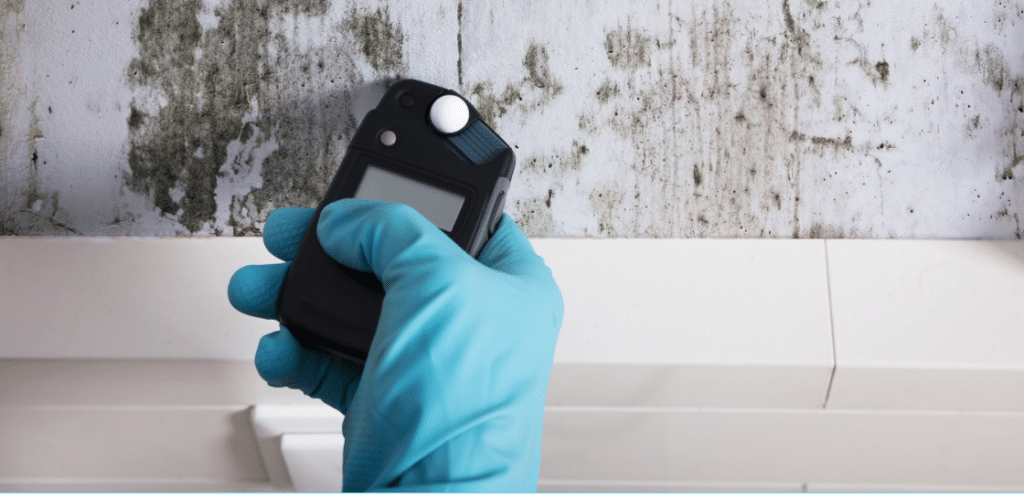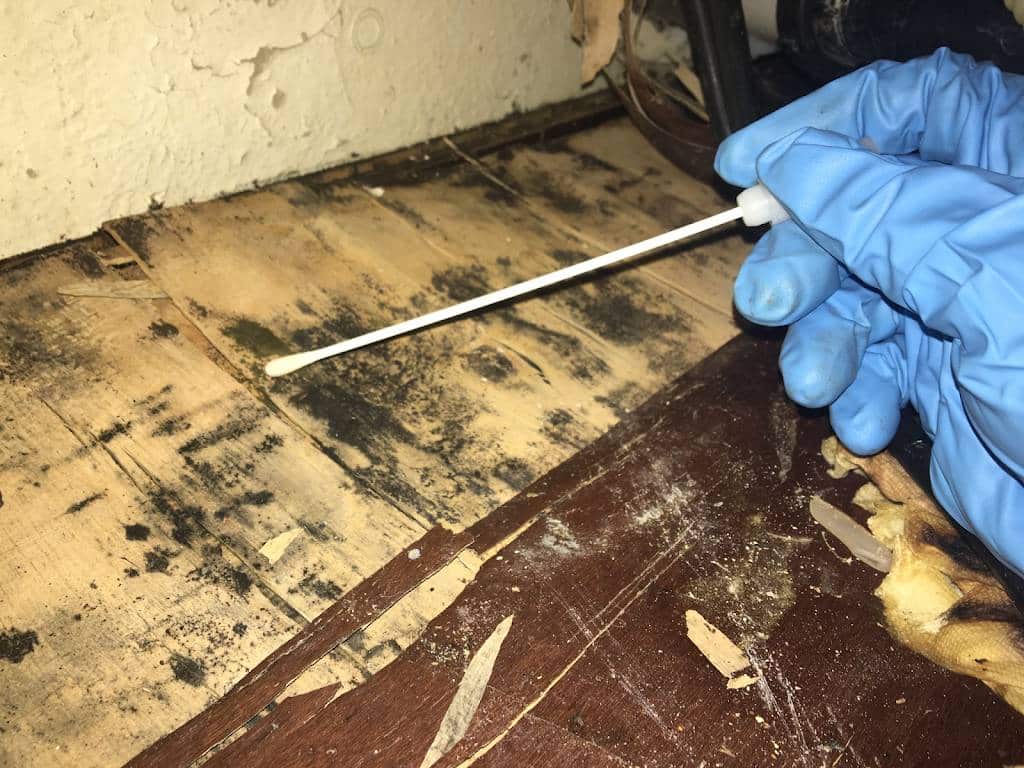Testing Air Quality After Mold Remediation
Testing Air Quality After Mold Remediation
Blog Article
Professional Tips for Article Mold Removal Success
In the realm of mold and mildew remediation, efficiently eliminating mold and mildew is just half the battle; the true difficulty depends on avoiding its reappearance. Post-remediation initiatives play an essential duty in making certain a mold-free environment in the lengthy term. By sticking to skilled ideas and best techniques, individuals can safeguard their rooms versus mold resurgence and preserve a healthy indoor atmosphere. It remains in this phase of the remediation procedure that focus to information and aggressive actions truly make a difference.
Display Humidity Levels Frequently
After completing mold removal treatments, maintaining ideal humidity degrees is vital to avoid mold and mildew re-growth and ensure a healthy indoor environment. High humidity levels over 60% produce a conducive setting for mold and mildew to prosper, making regular keeping track of a positive step to stop any kind of future mold and mildew issues.
Using hygrometers or dampness meters can aid in precisely measuring humidity levels in different locations of the residential property. These tools supply real-time data that allows removal specialists to make informed decisions relating to air flow, dehumidification, and various other required actions to preserve optimal humidity degrees post-remediation. Furthermore, establishing a routine timetable for moisture checks, especially in risky locations such as cellars, bathrooms, and kitchens, is a proactive method to mold and mildew prevention. By constantly keeping track of humidity degrees, residential or commercial property proprietors can effectively minimize the threat of mold and mildew reoccurrence and preserve a healthy interior atmosphere post-remediation.
Conduct Thorough Inspections Post-Remediation
Adhering to the completion of mold removal treatments, it is necessary to perform extensive evaluations to confirm the performance of the remediation procedure. These post-remediation evaluations are critical in guaranteeing that the mold and mildew problem has actually been efficiently dealt with and that there is no reappearance or remaining mold growth. Assessments ought to be accomplished by certified professionals who have know-how in recognizing mold and analyzing interior air quality.
During these assessments, different approaches such as visual assessments, air tasting, and surface sampling may be used to thoroughly assess the remediated areas. Visual assessments include an in-depth assessment of the facilities to look for any kind of visible indications of mold growth or water damage. Air tasting helps in figuring out the airborne mold spore levels, while surface tasting can identify mold bits on surface areas.
Implement Appropriate Air Flow Strategies
After making sure the efficiency of the mold remediation process through extensive evaluations, the following critical step is to focus on implementing appropriate ventilation approaches. Ample air flow is crucial in preventing mold reoccurrence by regulating wetness levels and promoting air blood circulation. To achieve this, it is recommended to use exhaust followers in areas vulnerable to high humidity, such as kitchen areas and bathrooms. Additionally, opening up doors and home windows when weather condition allows can aid enhance airflow and minimize dampness accumulation. Air dehumidifiers and purifiers are likewise beneficial devices in preserving ideal interior air top quality.
Appropriate air flow not only aids in preventing mold and mildew growth however likewise adds to the total wellness and convenience of passengers. By guaranteeing appropriate air flow throughout the property, you can decrease the risk of mold and mildew regrowth and create a much healthier living environment. Routine maintenance of air flow systems, including cleansing and filter replacements, is important to maintaining efficient air flow. Consulting with HVAC professionals can offer additional insights right into optimizing ventilation Full Article approaches for your specific residential property requirements.

Use Mold-Resistant Products for Fixes
To enhance the long-lasting performance of mold and mildew removal efforts, including mold-resistant products for repairs is essential in reducing the danger of future mold growth. Mold-resistant materials are designed to endure moisture and hinder mold and mildew growth, making them a vital choice for areas vulnerable to dampness and moisture. When fixing locations affected by mold and mildew, utilizing products such as mold-resistant drywall, mold-resistant paints, and mold-resistant caulking can assist avoid mold recurrence.
Mold-resistant drywall is an exceptional alternative to typical drywall in locations like cellars and bathrooms where dampness degrees are greater. This type of drywall has an unique covering that resists mold and mildew development also when exposed to damp conditions. In addition, utilizing mold-resistant paints containing antimicrobial representatives can additionally prevent mold growth on ceilings and walls.
In areas where dampness prevails, such as restrooms and kitchen areas, utilizing mold-resistant caulking around home windows, sinks, and bathtubs can help secure out water and avoid mold from taking hold in splits and crevices. By purchasing these mold-resistant products during fixings post-remediation, you can dramatically minimize the chance of future mold problems and keep a much healthier interior environment.
Maintain Cleanliness and Address Water Issues
Making sure cleanliness and without delay resolving water problems are fundamental methods to maintain in securing indoor areas from mold reinfestation. After mold remediation, it is essential to keep a tidy atmosphere to stop the regrowth of mold and mildew (After mold remediation). Normal cleaning, cleaning, and vacuuming can assist remove any type of sticking around mold and mildew spores and avoid them from working out and proliferating. Additionally, keeping interior spaces completely dry and addressing any type of water concerns promptly is vital in mold prevention. Leaks, water invasion, or high humidity degrees can develop the ideal breeding ground for mold, so it is crucial to deal with any kind of water-related troubles immediately.
To keep tidiness, take into consideration using HEPA filters in vacuum cleaners and air site link purifiers to catch mold and mildew spores and avoid their blood circulation airborne. Ensuring appropriate air flow in locations susceptible to moisture buildup, such as bathrooms and kitchens, can assist keep humidity degrees in check. By staying alert concerning sanitation and addressing water concerns promptly, you can successfully prevent mold and mildew reinfestation and keep a healthy interior setting.
Final Thought

In the realm of mold removal, efficiently eliminating mold and mildew is only half the battle; the true difficulty exists in preventing its reappearance. After finishing mold remediation procedures, preserving optimal humidity levels is vital to prevent mold re-growth and guarantee a healthy and balanced interior setting. High moisture degrees over 60% develop a helpful environment for mold to thrive, making regular checking a proactive measure to protect against any type of future mold and mildew problems.
To improve the lasting effectiveness of mold removal efforts, incorporating mold-resistant materials for repair work is important in reducing the risk of future mold development. After mold and mildew removal, it is vital to keep a tidy setting to stop the regrowth of mold.
Report this page